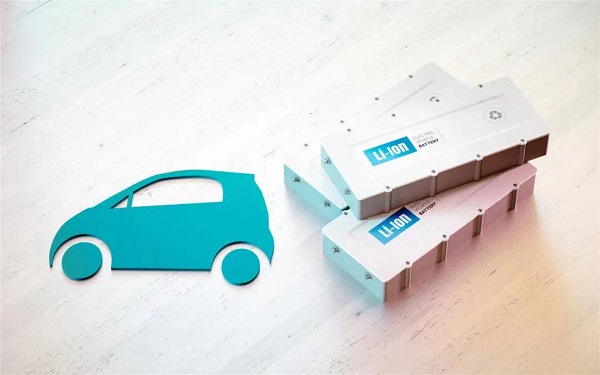Since the beginning of this year, with the triumphant advancement of the new energy vehicle market, the power battery industry is really “lively”.
New battery technologies
Driven by the market and demand, in the tide of rising raw material prices and intensified competition, thanks to the development of new materials and new processes, more and more new battery technologies have come to the fore. Some of them are about to be mass-produced, and some have promising prospects.

Li-Ion Power Batteries
These changes have given new energy vehicles and power battery industries more vigor and vitality, but at the same time they also mean that there are certain variables in the market.
Faced with this situation, how to make decisions and how to carry out layout will be a big test for enterprises.
In the past one or two years, the “involution” of power batteries in performance such as continued driving, safety, and fast charging has been intensified, and there are a variety of technologies that can achieve better characteristics.
Driven by the continuous increase in the scale and penetration of the new energy vehicle market, the pace of innovation and research and development of power battery technology is accelerating, bringing a new variable to the reshaping of the industrial structure.
Silicon anode battery
The new nickel-cobalt-manganese ternary lithium battery has a system energy density of 205Wh/kg. Different from ordinary nickel-cobalt-manganese ternary lithium batteries, the anode electrode of the new battery is added with a soft silicon wafer like a sponge.
This design makes the expansion and contraction of silicon in the charging and discharging process limited and the buffer will not break. At the same time, it also acts like a sponge to absorb water, allowing the silicon anode to play the advantage of large capacity and store more energy. Its core advantage is to greatly reduce the quality and volume of the battery.
Through this self-developed “Sponge Silicon anode Sheet Battery Technology”, under the same power condition, the power battery cell can achieve a volume reduction of 20% and a weight reduction of 14%.
280Wh/kg to 315Wh/kg
The current cell energy density of this new type of battery can reach 280Wh/kg. Through technical iteration in the future, this value is expected to increase to 315Wh/kg.
At this stage, the anode electrode material of power batteries is mainly artificial graphite, but its gram capacity is close to the theoretical value and it is difficult to further improve.
Therefore, the development of new anode electrode materials and technologies for lithium batteries has become the focus of research and development.
Commercial silicon material anodes are generally silicon-carbon composite systems. As related technologies gradually mature, their industrial applications are gradually advancing.
In 2020, shipments of silicon carbon anode materials will be 9 million tons, accounting for about 2%.
Tesla, which has always been known as the vane of the new energy automobile industry, turned its attention to silicon anode technology a few years ago.
Starting with Model-S and Model-X, Tesla has incorporated silicon materials into the graphite anode of power batteries. In the 21700 battery used on Model 3, the proportion of silicon has been increased again, and the energy density has increased by about 20% compared with the previous generation 18650 battery.
Silicon anode 4680 battery
It is worth noting that Tesla also stated that the latest 4680 battery will introduce silicon anodes to replace the original carbon-based materials.
It is also learned that Tesla recently acquired the American battery start-up company SiILion, which has a patent for “large battery anode electrodes containing silicon particles” and has now been transferred to Tesla’s name.
New car manufacturers in China are not far behind in the application of new technologies for power batteries. The nano-coated anode and ultra-high nickel cathode material, the pre-lithiated silicon carbon anode, and the semi-solid electrolyte is used. The single cell energy density can reach 350Wh/kg.
CATL’s “Silicon-doped Lithium Supplement” technology officially claims that its battery cell has a maximum energy density of up to 300Wh/kg, with 200,000 kilometers of zero attenuation and “never spontaneous combustion” characteristics.
Internationally, Panasonic and Samsung SDI’s cylindrical batteries have previously introduced silicon carbon anodes. In addition, Toyota, Mitsubishi, Hitachi Chemical, etc. are also major patent applicants of silicon-based anode material technology.
Development potential
In China, mainstream power battery suppliers have already seen the development potential of silicon anode batteries, and battery manufacturers such as CATL have launched relevant arrangements.
For example, at the beginning of this year, GX launched a new lithium iron phosphate battery with an energy density of 210Wh/kg for the first time. The company said that this performance improvement is inseparable from the key “high-gram capacity silicon anode materials and advanced pre-lithiation technology.”
Silicon-carbon anode materials can greatly increase the energy density of lithium batteries due to their large specific capacity, which is the development direction of a new generation of anode materials.
Lithium battery anode electrode from graphite system to silicon-based anode electrode will be the future upgrade direction. As the energy density requirements of power batteries increase, the combination of silicon-carbon anodes with high-nickel ternary materials has become a development trend.
In the next two years, with the gradual maturity of high-nickel ternary material technology, the industrialization of silicon-carbon anode is about to come.





